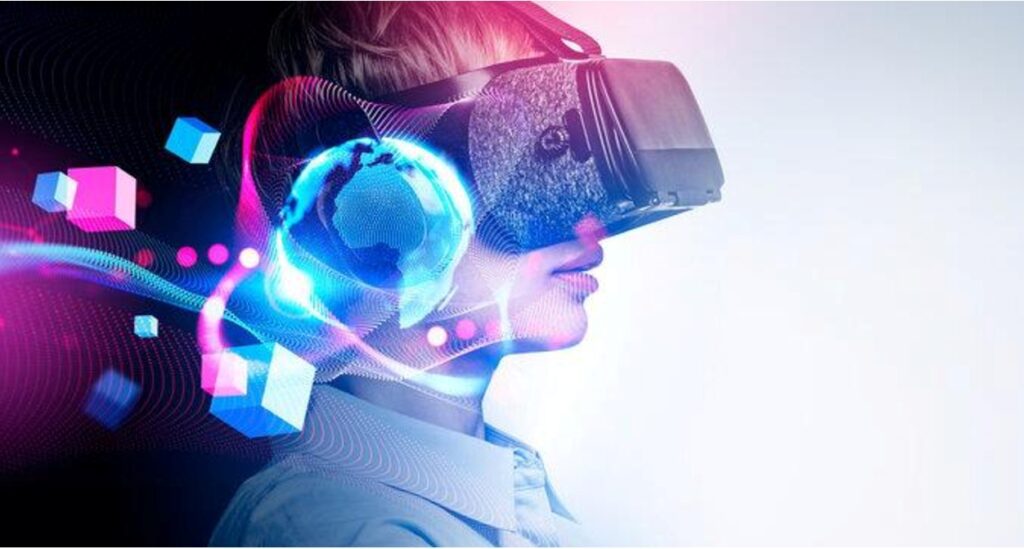Building the Metaverse In the realm of technology and innovation, the concept of the Metaverse has been making waves in recent years. It represents a futuristic vision where virtual and physical realities converge, creating a digital universe that spans across various platforms, devices, and experiences. With the advancement of virtual reality (VR), augmented reality (AR), artificial intelligence (AI), and other emerging technologies, the construction of the Metaverse is inching closer to reality. This article delves into the exciting journey of building the Metaverse and explores the implications it holds for individuals, businesses, and society at large.
What is the Building the Metaverse?
The Metaverse is an expansive interconnected network of virtual worlds, augmented reality environments, and digital spaces that exist parallel to our physical reality. Think of it as a collective virtual universe where users can interact, socialize, work, play, and create in ways that transcend the limitations of the physical world. Imagine attending a business meeting in a virtual boardroom, exploring distant galaxies with friends, or attending a live concert in a digital arena – all from the comfort of your own home.
The concept of the Metaverse draws inspiration from science fiction literature and pop culture, with references ranging from Neal Stephenson’s “Snow Crash” to Ernest Cline’s “Ready Player One.” However, recent technological advancements have brought us closer to making this sci-fi dream a tangible reality.

Building Blocks of the Metaverse
Several key technologies are driving the development of the Building the Metaverse:
- Virtual Reality (VR) and Augmented Reality (AR)
VR immerses users in entirely digital environments, while AR overlays digital information onto the real world. These technologies provide the foundation for the visual and sensory aspects of the Metaverse. Companies like Oculus (owned by Meta, formerly Facebook) and Microsoft’s HoloLens are pioneering advancements in this space.
- Artificial Intelligence (AI) and Machine Learning
AI plays a crucial role in creating lifelike avatars, realistic physics, natural language processing, and personalized experiences within the Metaverse. AI-driven algorithms enable interactions that mimic real-world social dynamics and enhance user engagement.
- Blockchain and Digital Ownership
Blockchain technology ensures security, privacy, and the concept of digital ownership within the Metaverse. It enables unique digital assets, known as non-fungible tokens (NFTs), which represent ownership of virtual items, art, and even virtual real estate.
- Social and Economic Infrastructure
The Metaverse is inherently social, fostering interactions and connections between users. Social platforms within the Metaverse facilitate communication, collaboration, and commerce. Economic models are being developed to support digital marketplaces, services, and job opportunities.
Opportunities and Challenges
The potential of the Building the Metaverse is immense:
- Enhanced Social Interaction
The Metaverse transcends geographical barriers, enabling people from all over the world to interact, socialize, and collaborate in shared spaces. This has the potential to revolutionize remote work, education, and interpersonal relationships.
- Innovative Business Models
Businesses can leverage the Metaverse to create new revenue streams through virtual products, experiences, and services. Virtual showrooms, concerts, conferences, and marketplaces are just the tip of the iceberg.
- Creative Expression
The Metaverse empowers creators – artists, musicians, writers, and developers – to showcase their work in novel ways, pushing the boundaries of what’s possible in the digital realm.
However, challenges exist:
- Technical Hurdles
Developing seamless cross-platform experiences, realistic simulations, and high-quality graphics requires overcoming technical obstacles.
- Privacy and Security
The Metaverse raises concerns about data privacy, security breaches, and the potential for surveillance within digital environments.
- Digital Divide
Not everyone has equal access to the required technology and infrastructure, potentially exacerbating existing inequalities.
The Path Forward
The construction of the Metaverse is a collaborative effort involving tech giants, startups, researchers, and policymakers. Interdisciplinary collaboration is essential to address technical, ethical, and societal challenges.
As we move closer to realizing the Metaverse, it’s crucial to strike a balance between technological advancement and human values. Transparent governance, ethical AI, user agency, and inclusivity should be at the forefront of its development.
In conclusion, the Metaverse holds the promise of transforming the way we interact, work, and experience the world. As technology continues to evolve, the lines between the physical and digital realms will blur, giving rise to a new era of human connection and innovation. The journey to build the Metaverse is not just about technology; it’s about shaping the future of human experience.





